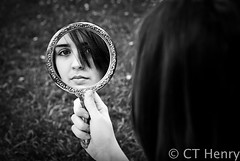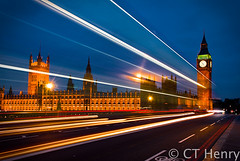So many people think that photography is effortless. They expect to pick up a camera and take great photos in a week, but the thing that separates the professionals from the amateurs is consistency. Watch Bob Jones’ interview for quality advice on how to capture great images.
Follow Me On Facebook!
12 Aug I just started a Facebook Photography page, where I’ll post my best images and dispense free photography tips and advice. If you’re interested, please go to: www.facebook.com/cthenryphoto OR just search for “C.T. Henry Photography” on Facebook. To follow my posts in the future, please click “Like” button at the top of the page.
I just started a Facebook Photography page, where I’ll post my best images and dispense free photography tips and advice. If you’re interested, please go to: www.facebook.com/cthenryphoto OR just search for “C.T. Henry Photography” on Facebook. To follow my posts in the future, please click “Like” button at the top of the page.
Feel free to comment and discuss the images I post.
I also have a new portfolio at: henryct.500px.com. The interface is much better than Flickr, and the pictures look gorgeous! Stop by and see my latest most recent work.
Thanks!
Great Advice for All Photographers
16 Feb In my last post, I mentioned how Ansel Adam’s powerful quote, “You don’t take a photograph, you make it,” becomes the guiding principle and foundation of the course. In the next lesson, we look at quotes by other photographers and ask how we can incorporate their lessons into our own photography. I’m going to ask you to do the same. After reading each quote, ask yourself:
In my last post, I mentioned how Ansel Adam’s powerful quote, “You don’t take a photograph, you make it,” becomes the guiding principle and foundation of the course. In the next lesson, we look at quotes by other photographers and ask how we can incorporate their lessons into our own photography. I’m going to ask you to do the same. After reading each quote, ask yourself:
1. What does the quote mean to you?
2. How will this advice improve your photography?
“Get a Notebook. No photographer should be without one!” – Ansel Adams
All of my students are required to carry a notebook in their camera bag. It’s a place for technical notes and shot lists, but it’s also easily accessible when you’re out in the field shooting and you forget how to do something.
“Take your dang camera with you everywhere! Cartier-Bresson took his camera with him everywhere—to the cleaners, to the cafe, to the cinema…he always had his trusty Leica M2 with him.” – Chris Orwig
I can’t stress this enough: It takes practice to be good at anything. You’ve got to do your visual push-ups everyday. The best way to do this is take your camera with you wherever you go.
“Your first 10,000 photographs are your worst. – Henri Cartier-Bresson
Don’t think that you can become a great photographer in one day or in a year. You’ve got to put in the time. You’ve got to spend a lot of time looking. You’ve got to click the shutter and learn from your mistakes. Ansel Adams is also famous for saying, “Twelve significant photographs in any one year is a good crop”. And he’s a professional!
“Become a more interesting person” – Jay Maisel responding to a student who asked him how to create more interesting photographs.
I can’t resist adding another quote of Jay’s since he’s the Yoda of photography quotes: “You have to want to look before you can see. There are a lot of people who think that the world and their life are boring. They don’t want to look. They’re negative outlook is what they bring to the world. Life is a bore. They don’t what to see possibilities; they’re not open to the world around them. They don’t see colors or gestures. You’ve got to want to look before you can see. It’s what you bring to it.” Essentially, living an enriched life makes you see the world rather than just look at it.
“Still of hand does not make up for emptiness of heart” – Rodney Smith
“The camera for an artist is just another tool. It is no more mechanical than a violin if you analyze it. Beyond the rudiments, it is up to the artist to create art, not the camera.” – Brett Weston
You can know all the camera techniques by heart and still miss the decisive moment. While you may be able to hand-hold a camera at 1/15 of a second and get the shot in perfect focus, it doesn’t mean that your image will touch people’s lives.
“I always thought good photos were like good jokes. If you have to explain it, it just isn’t that good.” – Syl Arena
Your photos should speak for themselves. If you find yourself explaining them, you need to work harder to tell the story visually.
“Photography is essentially an art of exclusion…It’s not always what you put in your frame – it’s sometimes what you leave out.” – David duChemin
The best images look effortless. Just like a poet says so much in so little words, aim to reduce the concept to its essence by ruthlessly excluding all the elements that don’t add to the story.
“The difference between great photographers and a not so great photographers is that the great ones don’t show their crappy pictures.” – Rick Sammon
Edit fiercely. Many of my photos end up in the trash. I’m only interested in the keepers.
“Which of my photographs is my favorite? The one I’m going to take tomorrow.” – Imogen Cunningham
Never be truly satisfied. Always have room for more photos and improvement.
Next Post: Three Things You Should Do with Your New Digital Camera
Make Pictures, Don’t Just Take Pictures
15 FebIn one of my first lessons, students discuss how they usually take pictures and what they expect to learn from the class. Most of their experience with cameras has been to see something, point their camera at it, and shoot it. This point-and-shoot technique results in snapshots, or photos that are taken without much thought. Anyone can do it. It’s easy. Most of the time, they shoot in Auto mode, so the camera actually decides how the image looks in the end.
Often the picture is of sentimental value. It’s a moment that the picture taker wants to remember. So it’s not how the photo looks; it’s all about how the person, who took the picture, feels. By itself, the photo doesn’t convey anything special. Meaning is only given to the image by the sentimentalist. In other words, the picture, shown to someone else, wouldn’t express the same nostalgia. Furthermore, no consideration is given to distracting elements in the background (like the pole coming out of my head in the picture above), what is in focus, or the camera angle. It’s simply a snapshot.
Students learn that to improve their photography, they must be able to communicate visually. After several weeks of lessons, the students freely quote Ansel Adam’s mantra: “You don’t take a photograph, you make it.” The feeling that you want to express or remember is actually a part of the image and directly accessible to other viewers. Transforming the scene into a storytelling device is the major aim.
Once you decide to abandon the point-and-shoot approach, you start with a willful desire to create images. You begin to look at the world through the eyes of an artist. You understand that you have the ability to interpret the scene and manipulate it in a way to communicate your unique vision. And the first step to creating visually interesting images is to take control of the camera! If you’re going to interpret the scene, you’ve got to switch Auto mode off.
My students start their photographic trek on Program (P) mode, which is like Auto in some respects, but gives them greater control over the brightness and color of their  photos. Slowly but surely, they take control of the entire camera, working their way to Aperture Priority mode, then Shutter Speed Priority mode, and finally Manual mode. With each step, they take further control of the camera and realize how they can communicate their unique vision to the viewer. They see the world in a completely new way, and it results in visually interesting photos.
photos. Slowly but surely, they take control of the entire camera, working their way to Aperture Priority mode, then Shutter Speed Priority mode, and finally Manual mode. With each step, they take further control of the camera and realize how they can communicate their unique vision to the viewer. They see the world in a completely new way, and it results in visually interesting photos.
All great images start in the photographer’s mind. When you make a picture, you visualize exactly what the photo will look like in print before ever clicking the shutter. You think about all the elements in the scene and how they can complement each other. You think about the lighting, the background, and what elements should be included or excluded from the scene. Try to make these creative decisions BEFORE you shoot. Ask yourself:
1. What story am I telling?
2. What is the subject?
3. What is in the background and foreground?
4. What parts of the scene compete with or distract attention away from the subject? How can I cut the clutter?
5. Am I close enough to the main subject?
6. What is my main source of light? Where do I want the light in my image?
7. What areas do I want to be in focus? What do I want to be out of focus?
8. What perspective do I want to shoot from?
9. Should the shot be in the horizontal format (landscape) or vertical format (portrait)?
10. Do I want to create a sense of movement?
Anyone can take a picture, but it requires a skilled photographer to tell a story in one still image.
Homework: Create a shot list. Visually imagine pictures you’d like to create. Think about the scene as a movie director would. What does the scene need? Think about location, casting, props, lighting, etc.
Next Post: How to be Creative – Advice from the Masters
Don’t shoot it, if it doesn’t excite you
11 FebBased on my last post, hopefully you just bought or received a new digital camera as a gift. After you took it out of the box, I bet you just couldn’t wait to take pictures. Lots of pictures! Clicking the shutter button is completely irresistible! Most novices start shooting away with abandon.
While it doesn’t cost anything to click the shutter several hundred times, if you really want to improve your photography, avoid the temptation to shoot everything – whether it moves or not.
In the first lesson with my students, I teach them one simple rule: Don’t shoot it, if it doesn’t excite you. In other words, there should be a reason why you’re clicking the shutter button. In the lesson, we look at different types of photography. I show them a series of images: portraits, landscapes, wildlife, travel, sports, and night photos. In an effort to show them what’s possible, I select only the best professional photos. They marvel at the images, often exclaiming “Wow!” The goal of the lesson is for them to find their passion. I ask them: What images stir something inside them? Which photos make them jealous? (making them wish that they had taken the photo). At the end of the slideshow, I ask them to select two categories that truly excite them. Those are the types of photos that they should seek out and create.
My point is that your best images often include subjects that you’re most passionate about. Shoot what you love, and you’ll be surprised how that passion comes across in your photography. The novice, who tries to capture everything, usually ends up with nothing. They’re just snapshots that don’t say much. The first step to better photos is to find your passion and shoot it.
Next Post: From Snapshots to Great Shots




























